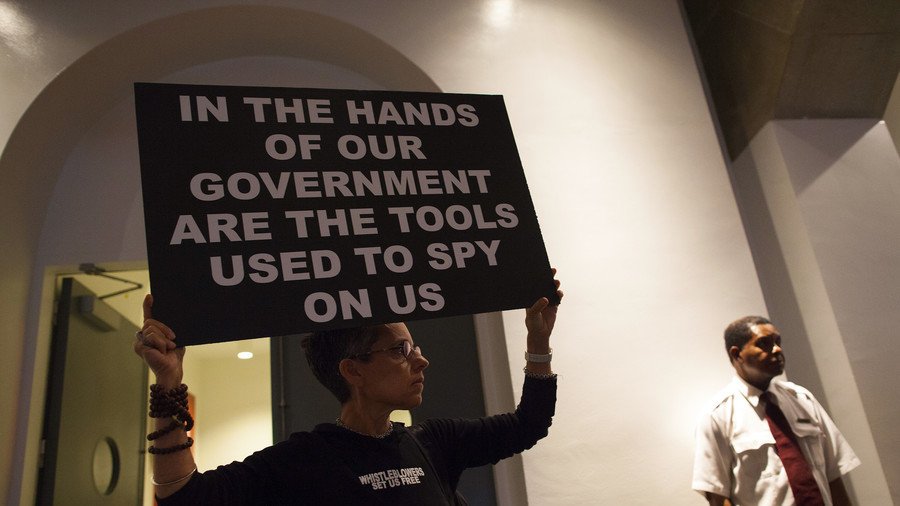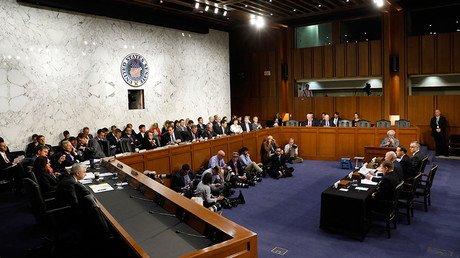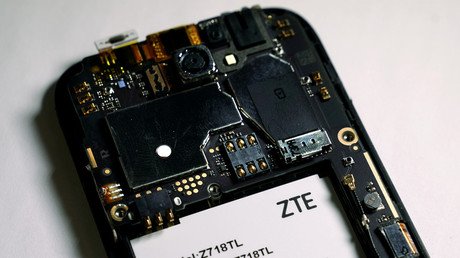NSA triples spying rate on Americans’ phone calls, collects 530mn records in 2017

The NSA has tripled its surveillance of Americans’ phone chatter, collecting over 534mn phone call records and text messages last year, despite pressure for more restrictions and transparency, a new official report has revealed.
Over the course of 2017, the National Security Agency (NSA) collected some 534,396,285 call detail records (CDRs), representing a dramatic increase over the previous year when, the agency gathered details of 151,230,968 calls, according to the report released by the Office of the Director of National Intelligence (ODNI).
A call detail record contains various attributes of the call, such as the source number, destination number, and the call duration, but does not include the “content of any communication, the name, address, or financial information of a subscriber or customer, or cell site location or global positioning system information,” the report states. The data is collected under the Foreign Intelligence Surveillance Act (FISA).
The report also noted that the NSA collected records from some 129,080 'non-US persons' which is a rather minor increase from 106,469 records collected the year before, under FISA Section 702. The highly controversial Section 702 does not require that an individual surveilled be a suspected terrorist, spy or foreign agent, nor does it demand judicial approval to target someone. Information gleaned by such data collection can be kept for years and may be used for purposes that do not have to be related to national security.
The NSA’s bulk collection of domestic telephony metadata was first revealed in 2013, through the leaked documents supplied by former intelligence contractor Edward Snowden. Among the leaks, Snowden revealed details of the PRISM program, which exploited Section 702 as a legal basis for collecting both content and metadata stored by several major internet companies that pertain to specific selectors, such as an email address. Another program, called Upstream, was also used by the NSA to intercept telephone and internet traffic that is pulled from internet data routes that travel through the US, the leaked Snowden documents revealed.
The revelations ignited public outrage over the NSA's global and domestic reach, prompting US lawmakers, tech companies and millions of Americans to demand transparency and reform of FISA. While some limits on the bulk collection of telecommunication data on US citizens by American intelligence agencies were imposed by the 2015 USA Freedom Act following Snowden's revelations, in January US lawmakers renewed the 2008 FISA Amendments Act, reauthorizing Section 702 for another six years.
NSA targeted cryptocurrency users globally, Snowden leaks show https://t.co/nohNeUoccK
— RT (@RT_com) March 21, 2018
Despite the massive increase in surveillance, the ODNI defended its use of such activity under its mandate.
“The government has not altered the manner in which it uses its authority to obtain Call Detail Records pursuant to FISA. Rather, the NSA has found that a number of factors may influence the number of Call Detail Records that NSA receives,” Tim Barrett, a spokesman at the Office of the Director of National Intelligence, told the Hill. “These factors include the number of Court-approved selection terms — like a phone number — that are used by the target; the way targets use those selection terms; the amount of historical data that providers retain; and the dynamics of the ever-changing telecommunications sector.”
Like this story? Share it with a friend!















